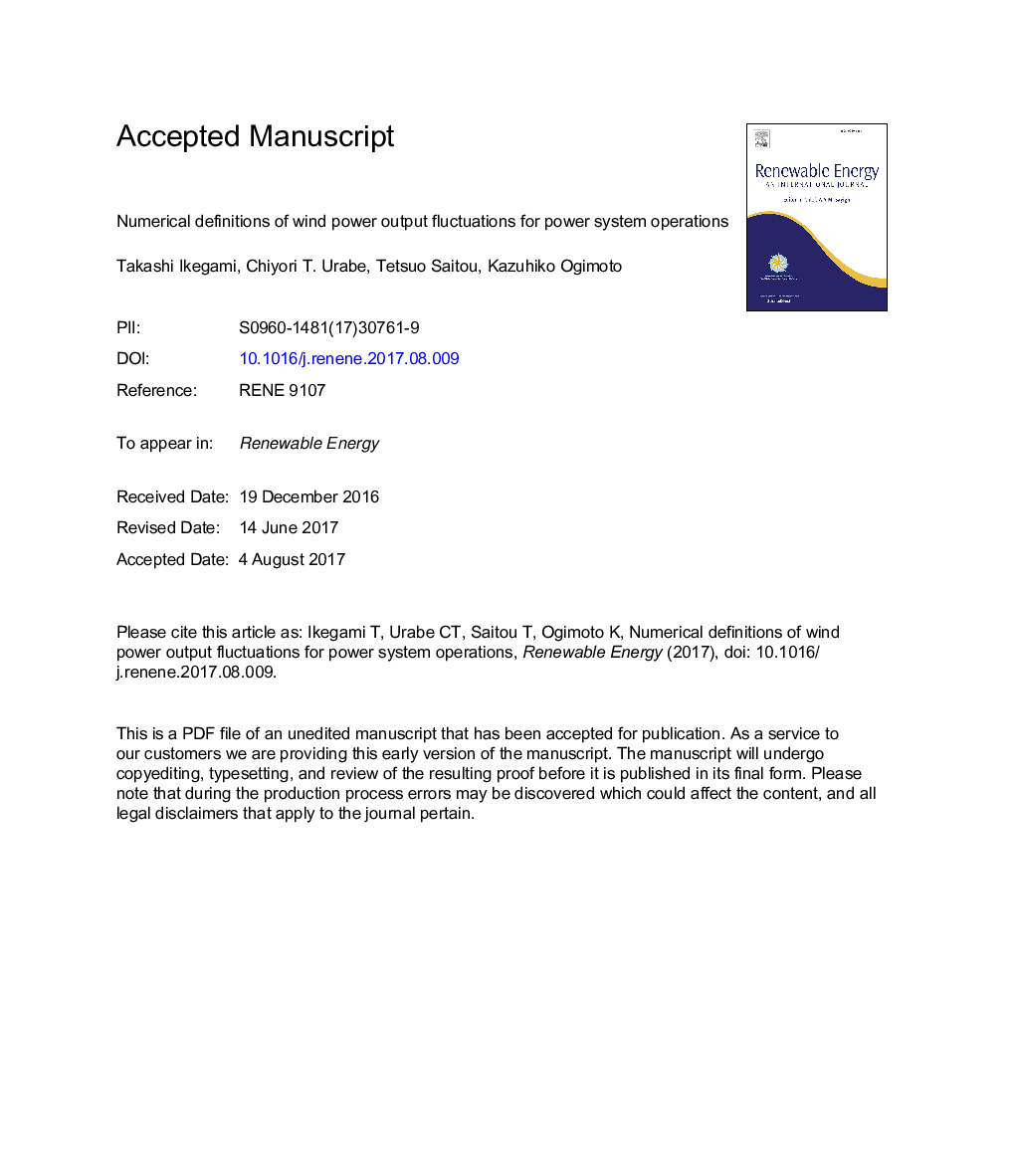| Article ID | Journal | Published Year | Pages | File Type |
|---|---|---|---|---|
| 6765166 | Renewable Energy | 2018 | 16 Pages |
Abstract
Because of unpredictable fluctuations in wind power output caused by sudden changes in weather conditions, operations that balance supply and demand in power systems will gradually become more difficult with the massive deployment of wind power generation. Therefore, it is necessary to quantitatively evaluate wind power output fluctuations in a way that corresponds to frequency controls in power system operations. In this study, we analyzed data for the fluctuations of actual wind power output at 20 wind farms, as designated by three basic definitions: the changes in time-averaged values, the maximum power-fluctuation range within a time window, and the deviations from a centered moving average value. The results indicated relevant differences between the definitions and demonstrated the importance of percentile analysis. We proposed a novel quantitative definition of the output fluctuations associated with the frequency controls of power systems: primary turbine-governor control, secondary load-frequency control, and tertiary economic load-dispatch control. Using these definitions to quantify fluctuations demonstrates how each smoothing technique can contribute to reducing the reserve capacity necessary for frequency control in the power system operations. Our proposed definitions for dividing the frequency ranges of the fluctuations were confirmed as a convenient and practical method for quantitatively evaluating the fluctuations and determining the reserve capacity required for stable power system operations.
Related Topics
Physical Sciences and Engineering
Energy
Renewable Energy, Sustainability and the Environment
Authors
Takashi Ikegami, Chiyori T. Urabe, Tetsuo Saitou, Kazuhiko Ogimoto,
